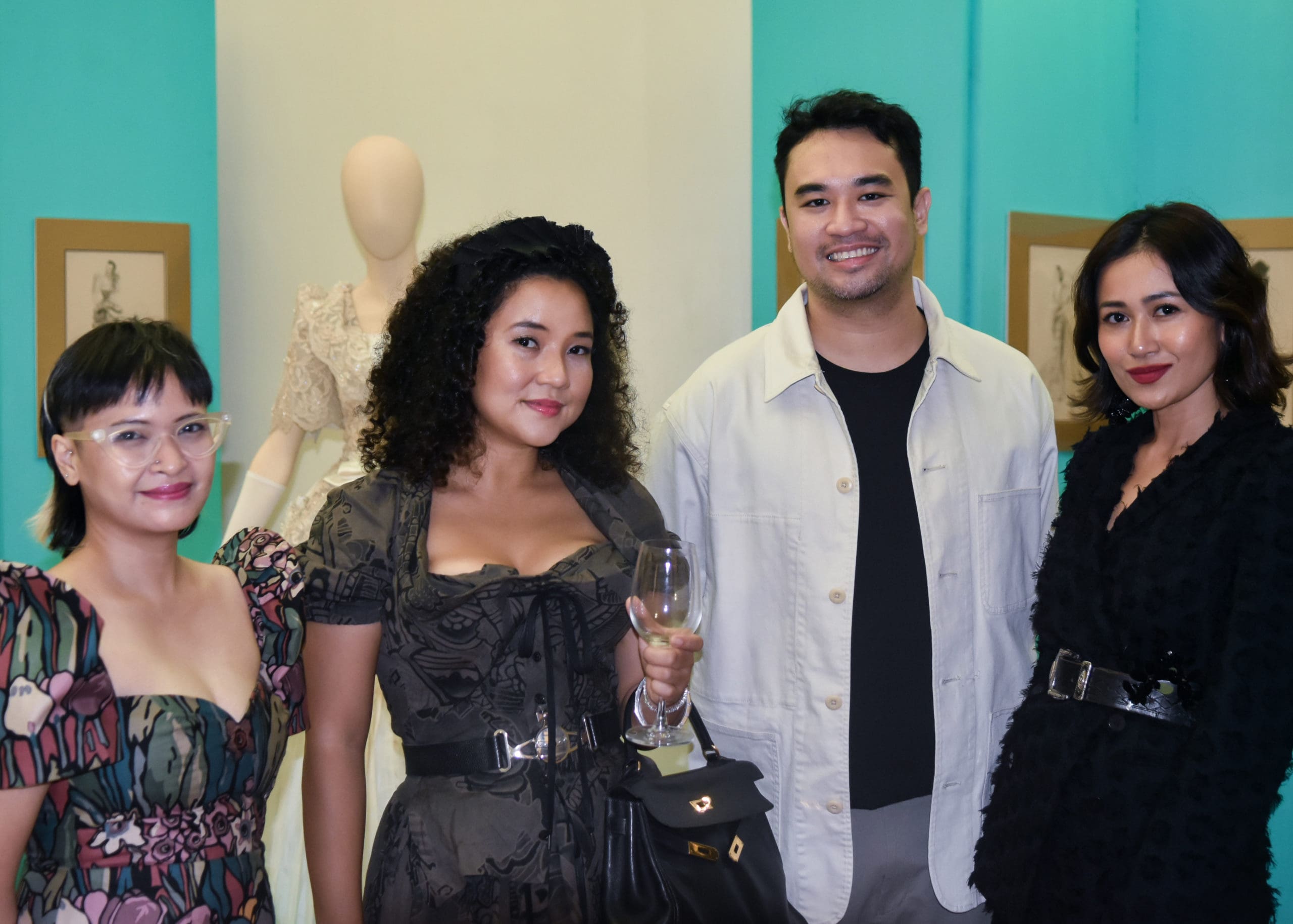Cia Co
The archival pieces of the late designer and National Artist at the newly-opened Metropolitan Theater show the breadth of the Filipiniana.
After six years of renovations and restorations, the Metropolitan Theater is finally reopening to the public. The 1930s American colonial-era building remains one of the landmark examples of Art Deco architecture in the Philippines and success stories in heritage preservation. As new owners of the structure, the National Commission for Culture and the Arts could think of no better way to debut the rehabilitated building than with an exhibit of the works of Salvacion Lim Higgins.
On the 50th year of the Order of National Artists, Salvacion Lim Higgins, fondly known as Slim, became the second ever in the field of fashion to receive the award, following Ramon Valera. She was recognized for her legacy as a purveyor of craftsmanship, putting the Philippines at the forefront of fashion in the mid-twentieth century. Salvacion glamorized the terno during her time and lifted Philippine fashion to the levels of haute couturiers in Paris, that she was even compared to some of them. For decades, it was Salvacion who put Filipino fashion on the map. To this day, her pieces still make the international museum rounds finding homes at the likes of the Victoria & Albert Museum in London and the Smithsonian Institution in Washington, DC.
Showcasing A Multifaceted Filipino Identity
For the maiden exhibit at the Metropolitan Theater, titled Imagining/Imaging and on display from October 24 through January 8, Salvacion’s son Mark Higgins put together a lineup of never-before-seen archival pieces of his mother’s interpretations of the Filipiniana. “I’ve always wanted to do a sort of medium-sized exhibit of my mom’s Filipiniana range of work because I thought it would be nice to show young designers what that range meant,” Mark tells Vogue Philippines. “The term Filipinana is something that only came up around the 1980s, it’s not an old term, as far as I know.”

He explains that the word Filipiniana is often misused to represent only two variations of the national costume; the Terno and the Traje de Mestiza. But the term should encompass all facets of our multicultural identity. Salvacion, always ahead of her time, did just that.
Going through the exhibit, viewers at first glance will note how contemporary each design seems, a comment often made about Slim’s work. Upon closer observation, her inspirations will become apparent. Each Filipiniana represents the unique identity and diverse backgrounds of Filipino women.
“[She] has kimonas, she has ethnic, sort of tribal pieces. She even did a bit of an Igorot collection at one point,” Higgins expounds, going through the displays, “She even did barong-inspired, with the cut work . . . Of course, there’s Muslim-inspired with the malongs, which she stylized.”
Conserving A Legacy
Higgins and the Slim’s team only had about six weeks to prepare for the Metropolitan Theater exhibit, in which they had to carry out the tedious process of repairing the damage on several of the clothes.
Lucy Perez and Clemen Rabe, veteran teachers at Slim’s Fashion and Art school, were among the restoration team, deconstructing and remaking sections of the dresses. Several generations of graduates will have passed under them and their guiding hands.
Higgins explains how some pieces were restored just for the occasion, having been only recently donated back to the school by the owner’s families. These include three wedding gowns on display in their own room, adjacent to the main exhibit hall. The first is a hand-painted jusi Terno word by Susana Bernardo Ramos during a portrait sitting for National Artist Fernando Amorsolo. Beside it, an intricate white wedding gown that was worn by Bernardo’s daughter.
The third dress in the room belonged to Genoveva Ignacio Bueno, who also sat for Amorsolo wearing Slim’s creation. Higgins notes that the beading on the gown had begun to oxidize, turning a dark gunmetal color. Some of the beadwork actually had to be replaced entirely due to its state.
Alongside the three dresses on display are original Slim’s sketches that date back to the 1940s and the insignia of the Order of National Artists, the Grand Collar.
On Shaping Generations of Designers
Besides giving new life to the Terno and Filipiniana, Slim co-founded her eponymous school with her sister Purificacion, which was handed down to her children; Mark and Sandy Higgins. The school is renowned for producing some of the most successful Filipino fashion designers like Michael Cinco, Albert Andrada, Cesar Gaupo, Joey Samson, Chito Vijandre, Oliver Tolentino, and many more.
Slim’s offers students a range of intensive courses unlike any other. The Dressmaking course makes use of the “Slim’s Method” of patternmaking and requires graduates to create their own rendition of the Terno for their final project, the only requirement being that the butterfly sleeves be made using traditional methods. The school also offers an extensive Bespoke Tailoring course with a curriculum drafted by tailors straight from Savile Row.
As Slim’s Fashion and Arts Schools champions the future of Philippine fashion, this retrospective exhibit lets us peek into the past—to remind us of how forward-thinking we have always been, and to showcase how diverse our identity really is.
During the exhibit’s preview, fashion insiders including fellow designers, models, and industry shakers came to support and appreciate historic pieces from a true artist.


Visit the exhibit from October 24, 2022 to January 8, 2023, at the newly-reopened Metropolitan Theater.












